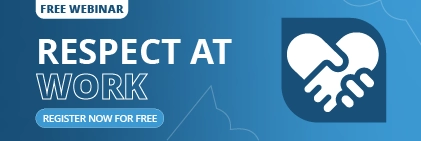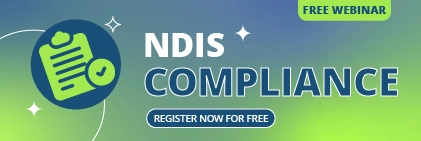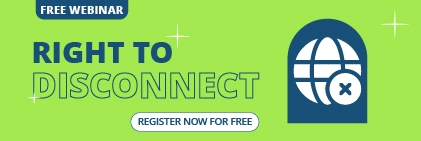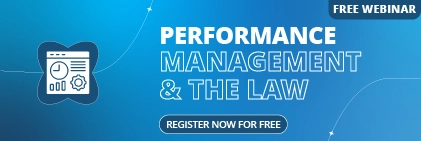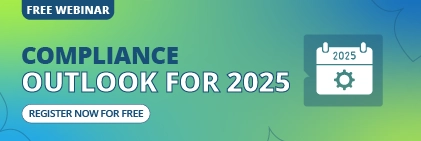In today’s complex regulatory landscape, Australian healthcare providers face unprecedented compliance challenges. From ever-evolving regulations to strict accreditation standards, maintaining compliance manually is no longer feasible.
Compliance management software offers a streamlined solution to these challenges, helping providers stay ahead of regulatory requirements while improving patient safety and operational outcomes.
Whether you’re managing a hospital, aged care facility, or small practice, implementing a digital compliance solution can transform your approach to regulatory adherence and risk management.
What is Compliance Management Software for Healthcare?
Compliance management software is a specialised digital solution designed to help healthcare organisations meet their regulatory, ethical, and operational obligations through automation and centralisation.
These platforms bring together various compliance elements into one unified system, replacing fragmented spreadsheets and paper-based processes with a structured approach.
At its core, compliance software enables healthcare providers to manage policies, track training, report incidents, assess risks, and prepare for audits, all from a single, accessible platform.
What are the Key Features for Australian Healthcare Compliance?
Modern compliance solutions offer features specifically designed for Australia’s healthcare regulatory environment, including:
- Document control systems that maintain the latest clinical procedures and safety guidelines
- Policy distribution tools that notify staff of critical updates and track acknowledgements
- Training management modules that assign and monitor mandatory competencies
- Incident reporting workflows that capture, investigate and resolve adverse events
- Risk assessment templates aligned with Australian standards and regulations
- Audit-ready reporting that generates evidence for accreditation bodies
These features are configured to support compliance with essential Australian healthcare frameworks, including the National Safety and Quality Health Service (NSQHS) Standards, Aged Care Quality Standards, and NDIS Practice Standards.
Why Is Compliance Management Critical in Australian Healthcare?
Australia’s healthcare sector operates within one of the most regulated environments, with multiple oversight bodies and frequently updated standards. Non-compliance can result in severe penalties, including legal action, loss of accreditation, funding cuts, and significant reputational damage that affects patient trust.
Healthcare providers must navigate this complex landscape whilst delivering quality care – a balancing act that becomes increasingly difficult without digital support systems.
How Compliance Software Benefits Healthcare Industry in Australia?
1. Improved Patient Safety
Beyond avoiding penalties, effective compliance management directly contributes to improved patient outcomes and safety in healthcare settings. When staff have access to current policies, complete required training, and report incidents promptly, they create a safer environment for patients and reduce preventable harm.
Compliance software ensures these critical processes are consistently followed, supporting a culture of quality improvement and patient-centred care.
2. Advanced Policy Management
Healthcare organisations maintain hundreds of policies, procedures, and guidelines that must be regularly reviewed and updated to reflect current best practices. Compliance software creates a centralised, searchable repository where staff can access the most up-to-date versions of these documents from any device, at any time.
This accessibility ensures clinical decisions are made using current information, reducing the risk of outdated practices compromising patient care.
3. Efficient Version Control and Approval
Policy management becomes streamlined with automated version control and approval pathways built into compliance platforms. When updates are required, the software facilitates review cycles, tracks changes, and maintains a complete audit trail of document history.
These features prove invaluable during accreditation processes, demonstrating governance over document control and systematic policy review.
4. Simplified Staff Training
Healthcare professionals must maintain numerous certifications and complete mandatory training in areas such as infection control, manual handling, and privacy. Compliance software automatically assigns required modules based on role requirements, notifying staff of new or expiring training obligations.
This automation ensures training compliance even in high-turnover environments like aged care and disability services.
5. Real-time Completion Tracking
Training visibility transforms with real-time dashboards showing completion rates across teams, departments, or entire organisations. Managers can quickly identify compliance gaps and take proactive steps to address training deficiencies before they impact operations.
For large healthcare providers, this visibility eliminates the administrative burden of manually tracking hundreds of training records.
6. Streamlined Incident Reporting
Traditional paper-based incident reporting creates delays that can compromise timely responses to adverse events in healthcare settings. Compliance software enables staff to report incidents instantly via mobile devices, capturing critical details at the point of occurrence.
This immediate reporting ensures nothing is overlooked and supports faster intervention when patient safety is at risk.
7. Structured Investigation Workflows
Once incidents are reported, the software guides teams through standardised investigation processes aligned with best practices. These structured workflows ensure thorough analysis of contributing factors and root causes behind clinical incidents or near-misses.
By bringing consistency to investigations, healthcare organisations develop more effective preventive strategies and safety improvements.
8. Higher Risk Management
Healthcare environments present unique combinations of clinical, operational, and workplace safety risks that must be systematically managed. Compliance software provides specialised risk assessment templates covering everything from patient falls to manual handling and infectious disease exposure.
These tools help healthcare providers maintain comprehensive risk registers that align with WHS legislation and clinical governance frameworks.
9. Effective Hazard Tracking
Identifying risks is only the beginning – healthcare organisations must implement and monitor control measures to mitigate potential harm. Compliance platforms track the implementation of risk controls, sending alerts when actions are overdue and confirming when measures are in place.
This closed-loop approach ensures risk management moves beyond documentation to actual risk reduction in clinical environments.
10. Simplified Accreditation
Preparing for healthcare accreditation traditionally involves weeks of gathering documentation and evidence from various sources. Compliance software maintains a continuous repository of evidence mapped to specific standards, eliminating last-minute rushes before assessment visits.
This preparedness reduces the stress and resource drain typically associated with accreditation cycles.
11. Self-Assessment Capabilities
Many compliance platforms include self-assessment tools that mirror actual accreditation criteria from regulatory bodies. Healthcare teams can conduct internal evaluations against these standards, identifying and addressing gaps well before external assessments.
This proactive approach transforms accreditation from a periodic hurdle into an ongoing quality improvement journey.
12. Better Patient Privacy
Australian healthcare providers must adhere to strict privacy principles when handling sensitive patient information. Compliance software incorporates controls and processes that align with Australian Privacy Principles and healthcare-specific requirements.
These features help organisations demonstrate privacy compliance through documented processes and access controls.
13. Secure Information Handling
The secure handling of health information requires robust systems with appropriate access restrictions and data protection. Compliance platforms implement role-based permissions, ensuring staff can only access information relevant to their responsibilities.
Every action within the system is logged, creating accountability and transparency in the handling of confidential data.
What are the Measurable Benefits for Healthcare Organisations?
The global healthcare compliance software market is growing rapidly at an annual growth rate of 13.5%, reflecting the increasing value organisations place on these solutions.
| Benefit Area | Without Compliance Software | With Compliance Software |
|---|---|---|
| Training Management | Manual tracking, email reminders, low visibility | Automated assignments, real-time tracking, certification alerts |
| Incident Reporting | Paper forms, delays in reporting, inconsistent follow-up | Instant digital capture, structured workflows, trend analysis |
| Accreditation Readiness | Last-minute rush for evidence, stress, overtime | Continuous evidence collection, mapped to standards, always ready |
| Policy Management | Outdated documents, version confusion, email distribution | Central repository, automated review cycles, targeted distribution |
| Risk Management | Static risk registers, reactive approach | Dynamic assessments, preventative controls, proactive approach |
While specific Australian healthcare studies around usage of compliance management software showing improvement percentages are limited, implementation case studies consistently show substantial benefits of compliance management software across healthcare settings.
Most importantly, compliance activities integrate more naturally into healthcare workflows, reducing administrative burdens while improving patient safety outcomes.
What is the Difference between Manual and Automated Compliance?
Healthcare organisations have a choice in how they approach compliance management:
Manual Approach:
- Staff spending hours maintaining spreadsheets
- Emails and paper forms for incident reporting
- Scattered evidence for accreditation
- Limited visibility of compliance status
- Reactive approach to regulatory changes
Automated Approach:
- Real-time compliance dashboards
- Mobile device incident reporting with automated workflows
- Continuous evidence collection mapped to standards
- Comprehensive visibility across all departments
- Proactive alerts for regulatory updates
The difference in operational efficiency and compliance effectiveness is substantial, with automated systems freeing clinical staff to focus on patient care rather than administrative tasks.
How Does Compliance Software Benefit Different Healthcare Settings?
Hospitals and Health Networks
Large healthcare networks benefit from standardised compliance processes across multiple sites while allowing necessary local variations. Administrators gain organisation-wide visibility into compliance status, enabling targeted interventions where needed.
The software’s scalability handles the complexity of hospital environments with diverse departments and specialists.
Aged Care Providers
With intense regulatory scrutiny, aged care providers leverage compliance software to demonstrate adherence to Aged Care Quality Standards. The efficiency gains allow care staff to focus more on residents and less on administrative compliance tasks.
Digital documentation provides evidence of quality care delivery for audits and accreditation visits.
NDIS and Disability Services
NDIS providers navigate unique compliance requirements through specialised templates aligned with NDIS Practice Standards. The software supports providers through audit cycles with evidence of quality service delivery and client safety.
Mobile device access ensures support workers can access policies and report incidents from any location.
Conclusion
In Australia’s highly regulated healthcare environment, compliance management software has transformed from a nice-to-have into an essential operational tool.
From policy control and workforce training to incident management and accreditation readiness, these platforms deliver efficiency, visibility, and risk reduction across all aspects of healthcare compliance.
By implementing a comprehensive compliance solution, healthcare organisations create not just a tick-box approach to regulations, but a culture of continuous improvement that ultimately benefits patients, staff, and the organisation itself.
Ready to Transform Your Healthcare Compliance with Sentrient?
Sentrient’s compliance management software is specifically designed for Australian healthcare providers, with features aligned to NSQHS Standards, Aged Care Quality Standards, and NDIS requirements.
Our platform helps you move beyond manual compliance management to a streamlined, digital approach that saves time, reduces risk, and improves governance.
Contact us today to arrange a demonstration tailored to your specific healthcare setting and compliance needs.
FAQs
1. Which healthcare regulations does compliance software help with in Australia?
Compliance software supports adherence to key Australian frameworks including NSQHS Standards, Aged Care Quality Standards, NDIS Practice Standards, Australian Privacy Principles, and state-specific Work Health and Safety regulations.
2. Is compliance software suitable for both large hospitals and smaller healthcare providers?
Yes, modern compliance systems scale effectively to suit organisations of all sizes, from major hospital networks to independent practices, with configurable features based on specific needs.
3. Can compliance software integrate with existing healthcare systems?
Most compliance platforms offer API integration with common healthcare HRIS System, patient management systems, and clinical systems to prevent duplication of data and ensure seamless workflows.
4. How quickly can a healthcare organisation implement compliance software?
Most organisations can fully implement a compliance platform within 4–6 weeks, with priority modules available for use within days of commencement.
5. What support is available during and after implementation?
Leading providers like Sentrient offer dedicated implementation specialists with healthcare experience, followed by ongoing Australia-based support and regular system updates reflecting regulatory changes.
6. How does compliance software help with NSQHS accreditation?
The software maintains continuous evidence mapped directly to NSQHS standards, automates policy distribution and training, and provides audit-ready reports that demonstrate compliance during assessment visits.
